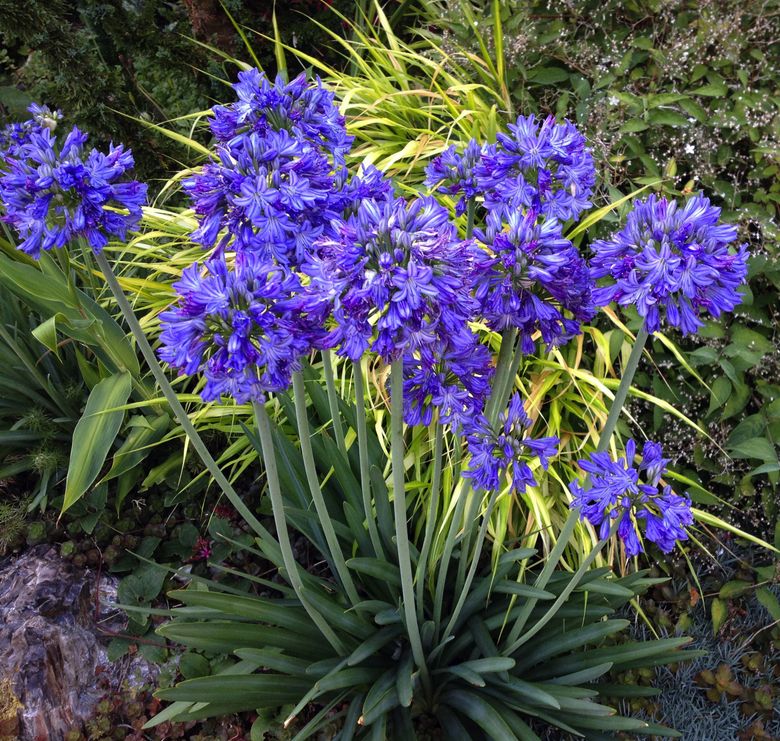How to Plant and Maintain Agapanthus in Your Garden
How to Plant and Maintain Agapanthus in Your Garden
Blog Article
Understanding the Art of Agapanthus Care: Important Steps for Healthy And Balanced Development and Vivid Blooms
In the realm of horticulture, the growing of agapanthus stands as a satisfying undertaking for those that look for to support these classy blooming plants. With their striking blossoms and elegant vegetation, agapanthus has actually recorded the interest of gardeners worldwide. Nevertheless, achieving ideal growth and vivid blossoms requires a nuanced method that includes numerous crucial actions. From picking the appropriate selection to understanding trimming methods, the journey towards growing growing agapanthus plants is multifaceted and holds the key to unlocking the complete possibility of these agricultural treasures.

Choosing the Right Agapanthus Range

When choosing the best Agapanthus variety for your yard, consider variables such as climate viability, flower color, and development practice. Furthermore, take into consideration the climate in your area to guarantee the Agapanthus variety you select can grow in your specific conditions. Comprehending the growth routine of various Agapanthus varieties is crucial for appropriate positioning within your garden.
Ideal Growing Conditions
Thinking about the optimum ecological demands is essential for effective Agapanthus growing. Agapanthus plants are delicate to chilly temperature levels and need to be shielded from frost throughout winter months.
To make certain healthy and balanced growth and dynamic blooms, plant Agapanthus light bulbs at a depth of about 2-4 inches and room them 8-12 inches apart. Mulching around the base of the plants assists keep moisture and suppresses weed development.
Watering and Fertilizing Tips
Maintaining correct wetness levels and giving essential nutrients are crucial elements in the care routine for Agapanthus plants. When it involves sprinkling Agapanthus, it is vital to strike a balance. If overwatered, these plants choose continually damp dirt but are prone to root rot. During the expanding period, water deeply once a week, ensuring the soil is well-draining to protect against waterlogging. In hotter climates or during periods of dry spell, even more constant watering may be essential to keep the soil uniformly wet. Nevertheless, lower watering in the winter to prevent water logged conditions.
Fertilizing Agapanthus is important for promoting healthy growth and respected blooms. Use a well balanced plant food, such as a 10-10-10 formula, in the early spring as brand-new growth emerges. By following these watering and fertilizing ideas, you can guarantee your Agapanthus plants flourish and create dynamic, resilient flowers.
Pruning Techniques for Agapanthus
Pruning Agapanthus plants at the proper times and with proper techniques is essential for preserving their wellness and advertising optimum development and flowering. The ideal time to trim Agapanthus remains in late wintertime or early spring prior to brand-new growth arises. Begin by eliminating any type of dead or yellowing fallen leaves near the base of the plant. Cut them as close to the ground as feasible without harming the emerging shoots.
For flowered stems, wait until the blossoms go to this website have perished and after that trim them back to the base. This not just cleans the plant's look however likewise motivates the development of new blossom buds. Deadheading spent flowers can also reroute the plant's power into generating even more blooms rather than establishing seeds. However, if you wish to collect seeds for proliferation, leave some blossoms to completely dry and mature on the plant.
Bear in mind to use tidy, sharp tools to make accurate cuts and lower the risk of presenting illness. Agapanthus. Regular pruning will certainly aid maintain your Agapanthus looking healthy look these up and balanced and neat while making certain a bountiful screen of beautiful blooms
Managing Typical Bugs and Conditions
After ensuring correct trimming strategies for Agapanthus, it is necessary to address common parasites and conditions that can affect the wellness and vitality of these plants. Agapanthus plants are usually durable however can still succumb particular concerns. One common parasite that impacts Agapanthus is the Agapanthus gall midge. This tiny, orange fly lays its eggs in the foliage, resulting in distorted development and flower buds that fall short to open up. To fight this pest, trim and ruin any kind of affected plant components and take into consideration making use of insecticidal soap.
Furthermore, Agapanthus plants can experience from root rot if they are grown in badly draining dirt. By being click here for more watchful and taking prompt activity against bugs and diseases, you can assist your Agapanthus plants flourish and produce lively flowers. Agapanthus.

Final Thought
In conclusion, understanding the art of agapanthus treatment includes choosing the appropriate selection, offering suitable planting conditions, appropriate watering and fertilizing, proper trimming methods, and addressing usual insects and illness. By following these vital steps, you can make certain healthy and balanced growth and vivid blooms for your agapanthus plants. Remember to frequently keep an eye on and keep your plants to promote their general health and long life.
To ensure healthy and balanced growth and vivid blossoms, plant Agapanthus light bulbs at a deepness of about 2-4 inches and space them 8-12 inches apart. By following these watering and feeding suggestions, you can ensure your Agapanthus plants grow and create lively, durable flowers.
One common parasite that influences Agapanthus is the Agapanthus gall midge. Furthermore, Agapanthus plants can suffer from origin rot if they are planted in improperly draining pipes dirt. By following these crucial actions, you can guarantee healthy growth and dynamic blooms for your agapanthus plants.
Report this page